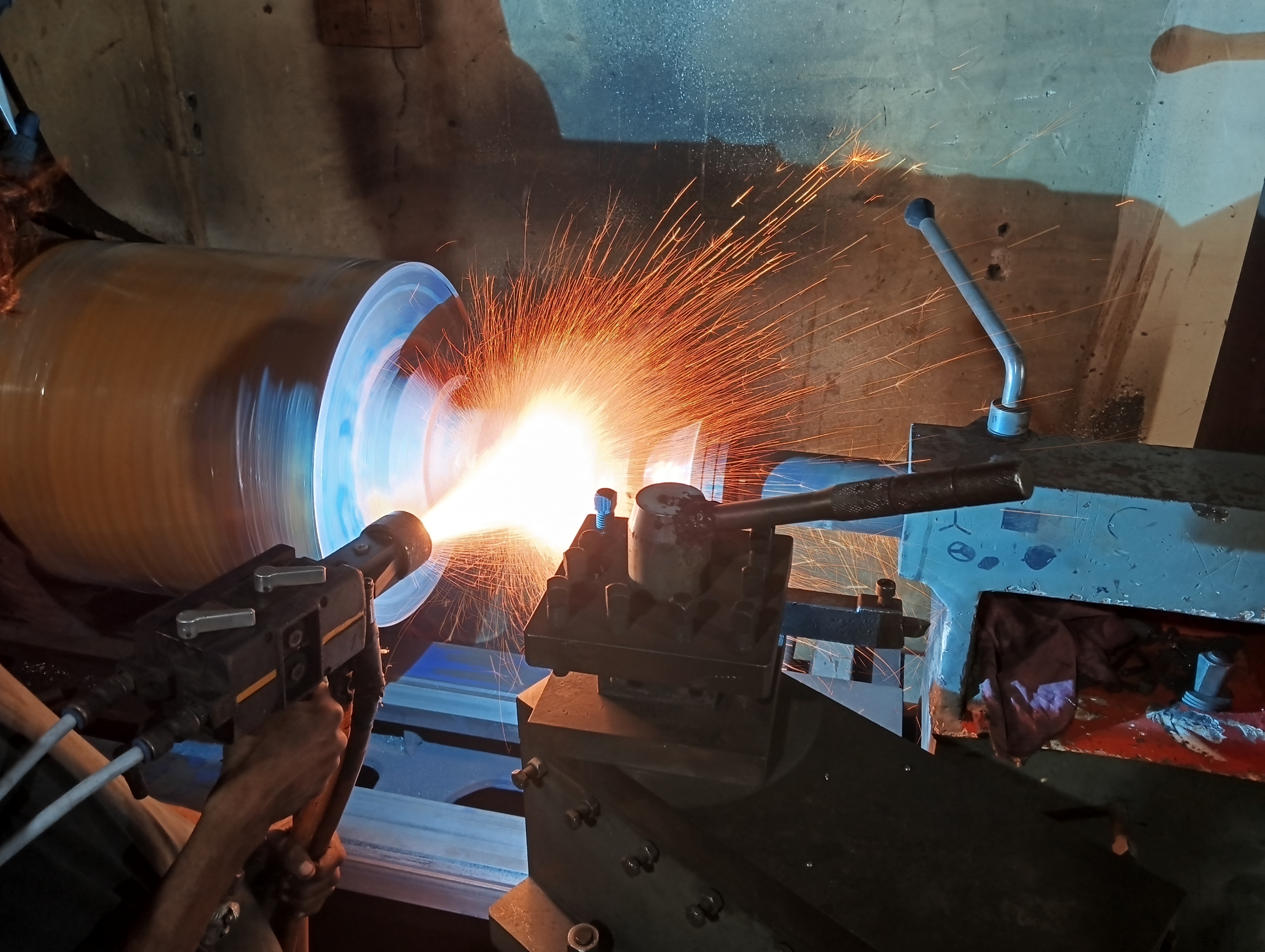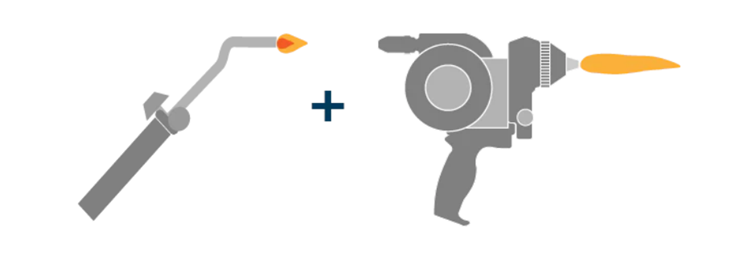Spray and fuse uses high heat to increase the bond between the thermal spray coating and the substrate of the part. Unlike other types of thermal spray, spray and fuse creates a metallurgical bond between the coating and the surface. This means that instead of relying on friction for coating adhesion, it melds the surface and coating material into one material. Spray and fuse is the difference between adhesion and cohesion
Spray and fuses sprays a powdered material onto the component then follows with an acetylene torch. The torch melts the coating material and the top layer of the component material; fusing them together. Due to the high heat of spray and fuse, some heat distortion may occur, and care must be taken to determine if a component is a good candidate. These high temperatures are akin to those used in welding. The resulting metallurgical bond creates an extremely wear and abrasion resistant coating. Spray and fuse delivers the benefits of hardface welding with the ease of thermal sprayp>

